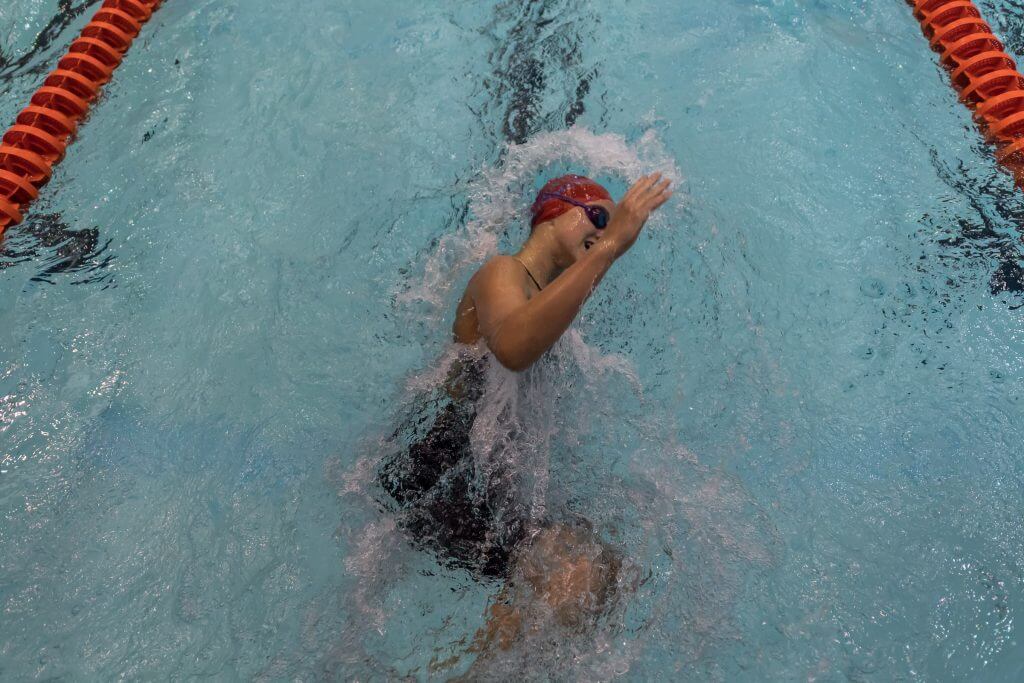A Look At the Movements Required For Strong Turns

A Look At the Movements Required For Strong Turns
Turn-time is the time spent between touching the wall with your hands or feet and the pushoff. Improving your turn will result in faster splits. The main goal is to reduce the time spent rotating your body and to get as much momentum as possible to continue swimming. Studies have found that turns can positively or negatively influence races by between 0.5 and 1.5 seconds, depending on the distance of the race. A good turn is not only a fast one but also efficient.
Here are some factors to consider to produce strong turns – especially for the novice swimmer.
The Approach
The first part of executing a good flip turn or open turn is the approach. This action has the same importance and effect as the turn itself. When approaching the wall, swimmers must avoid lifting their heads to look. Looking up results in higher frontal drag and reduced speed. Another common mistake, especially when doing a flip turn, is gliding for a short period before the turn. In this case, momentum is lost, so it will take more effort to get the legs through the turn.
The best solution to keep your speed when approaching the wall is to take advantage of the “T” mark on the bottom of the pool. Swimmers should manage how many strokes it will take them to reach the wall once their head is aligned with the “T”. This will also benefit their technique when initiating the turn. Equally important, swimmers should approach the wall in an “attack mode”. This mode is approaching with attitude by accelerating in the last five meters of each lap. Complementary to this, swimmers should not breathe during the last two strokes into the wall.
Flip Turns
The flip turn starts with the last strokes of each lap. The next step is to keep the head down simultaneously with the last stroke and bring the chin down to the chest into a tucked position. As a result, the hips will rise, making it less challenging to move the legs. Then, rolling with adequate momentum will put the feet on the wall. If done correctly, the swimmer should be facing up. At this moment, the hands should be to the side of the body, so they are ready to lead the streamline position when pushing off the wall. Once the feet touch the wall, swimmers should explosively push off the wall with a strong streamline.
Open Turn
The open turn starts with the last complete stroke that touches the wall. If swimming in a pool with gutters, swimmers must not grab and pull themselves up to the wall. However, they should place the hands toward the top of the touchpad or around the waterline. After both hands touch the wall, swimmers must bend their elbows and quickly bring the legs into their chest. This last movement must feel as if they are driving the knees into the wall. As a result, the knees should be pointing upwards toward the surface.
At the same time the legs are moving, swimmers must push either their right or left elbow back. The elbow should be moved hard enough so it causes a shoulder rotation. Again, do not move the head and keep it near the surface of the water. The movement will naturally leave a small space to catch a quick breath. Bring the other arm over the water as close as possible to your ear, like it is fixing your hair or answering the phone. Finally, quickly enter a streamline and prepare to push off the wall.
The Push Off the Wall
When pushing off the wall, swimmers should slightly start rotating, but in a streamlined position. The importance of the streamline is to reduce drag and maximize speed. Commonly, swimmers forget to catch a streamline due to the rush of starting swimming again. The push off the wall is the second-fastest speed that a swimmer reaches during the length of the pool, just after the dive. Therefore, swimmers should always keep in mind their shoulder angle, head position, and streamline to avoid producing drag. After pushing off the wall, and to take full advantage of their momentum, swimmers should glide for a short period before starting with the underwater phase.



